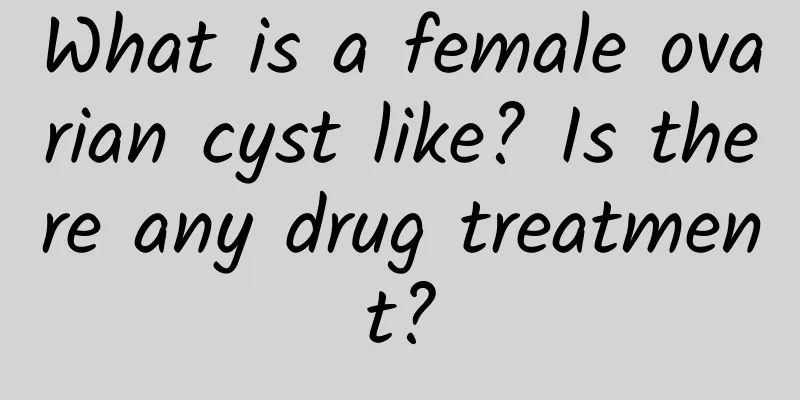Is irregular menstruation a sign of cervical precancerous lesions?

|
Irregular menstruation is not necessarily a sign of cervical precancerous lesions, but it may be associated with a variety of gynecological diseases, including cervical lesions. The causes of irregular menstruation are complex, involving physiological, pathological, environmental and other factors, and need to be judged based on specific symptoms and examination results. 1. Causes of irregular menstruation Irregular menstruation may be related to endocrine disorders, uterine fibroids, polycystic ovary syndrome and other diseases. Cervical precancerous lesions usually manifest as irregular bleeding, bleeding after sexual intercourse and other symptoms, rather than simple irregular menstruation. Specific causes of irregular menstruation include: Physiological factors: such as endocrine fluctuations during puberty or menopause. Pathological factors: such as endometriosis and abnormal thyroid function. Environmental factors: such as excessive stress, irregular work and rest schedule, and excessive dieting. Genetic factors: A family history of gynecological problems may increase the risk. 2. Screening and diagnosis of cervical precancerous lesions Cervical precancerous lesions are usually screened through cervical cytology tests such as TCT and human papillomavirus (HPV) testing. If abnormalities are found, further examination and cervical biopsy are required to confirm the diagnosis. Early screening and intervention are the key to preventing cervical cancer. 3. Treatment of irregular menstruation For irregular menstruation, different treatment measures should be taken according to the cause: Drug treatment: such as oral contraceptives to regulate hormone levels, progesterone to treat luteal insufficiency, and traditional Chinese medicine to regulate qi and blood. Surgical treatment: such as myomectomy and endometrial ablation. Lifestyle adjustments: Maintain a regular schedule, avoid excessive dieting, and do appropriate exercise such as yoga and jogging. Dietary adjustment: Eat more foods rich in iron and vitamins, such as spinach, red dates, and lean meat. 4. Prevention and treatment of cervical precancerous lesions The key to preventing cervical precancer is regular screening and HPV vaccination. If precancerous lesions are diagnosed, treatment includes: Conization of the cervix: Removal of diseased tissue. Laser therapy: Laser therapy vaporizes diseased cells. Cryotherapy: Use of low temperatures to destroy abnormal cells. Irregular menstruation is not directly related to cervical precancerous lesions, but abnormal menstruation may be a sign of a variety of gynecological diseases. If you experience irregular menstruation or other abnormal symptoms, you should seek medical attention in a timely manner to identify the cause and take targeted treatment. Regular gynecological examinations and a healthy lifestyle are important measures to prevent gynecological diseases. |
<<: What causes functional uterine bleeding and how to treat it
>>: What to eat to replenish the body after four months of miscarriage
Recommend
What are the symptoms of multiple uterine fibroids?
Multiple uterine fibroids are a common gynecologi...
Eating ice causes diarrhea? Detected salmonella! Nutritionist Li Yihua: 4 principles to prevent salmonella infection
Recently, more than 20 people went to an ice crea...
The leading baby talent show company's charity work received praise
The biggest hope of parents is that their childre...
Don’t want to ruin your mountain climbing mood? Make these preparations before going abroad or traveling to reduce the incidence of altitude sickness
With the development of information and the impro...
Vulvar infection and inflammatory irritation can cause vulvar leukoplakia
Vulvar leukoplakia refers to localized or diffuse...
What is the cause of yellow leucorrhea and vulvar itching?
What's wrong with yellow leucorrhea and vulva...
What are the treatments for vaginitis?
What are the treatments for vaginitis? Vaginitis ...
How long does it take for endometrial thickening to be completely cured?
In daily life, women need to pay attention to the...
Facing the truth about obesity (Part 1): Can you lose weight by eating less?
In the early 21st century, at a clinic in a slum ...
Puncture and injection of drugs to treat Bartholinitis
Bartholinitis seriously attacks women's bodie...
Should ovarian cysts be removed? Who are the most suitable people for surgery?
Should ovarian cysts be removed? Who are the most...
A brief analysis on the prevention of threatened abortion
Although many threatened abortions are due to fac...
How to treat adenomyosis and uterine enlargement effectively
Adenomyosis causes the uterus to enlarge. Treatme...
Pelvic inflammatory disease still hurts after 10 days of anti-inflammatory injections
If you still have pain after 10 days of pelvic in...
What to do if the endometrium is thick at the age of 50
Treatments for endometrial thickening include med...









